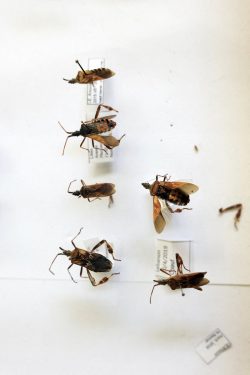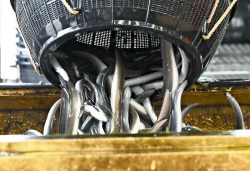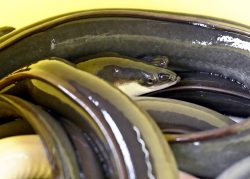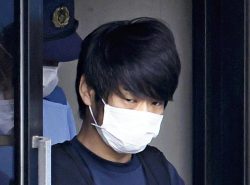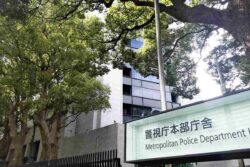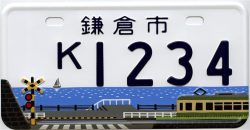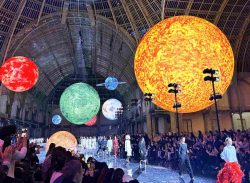
Deer graze on grass on the beach along the north coast of Uji Island in Fukuyama, Hiroshima Prefecture.
13:23 JST, May 29, 2021
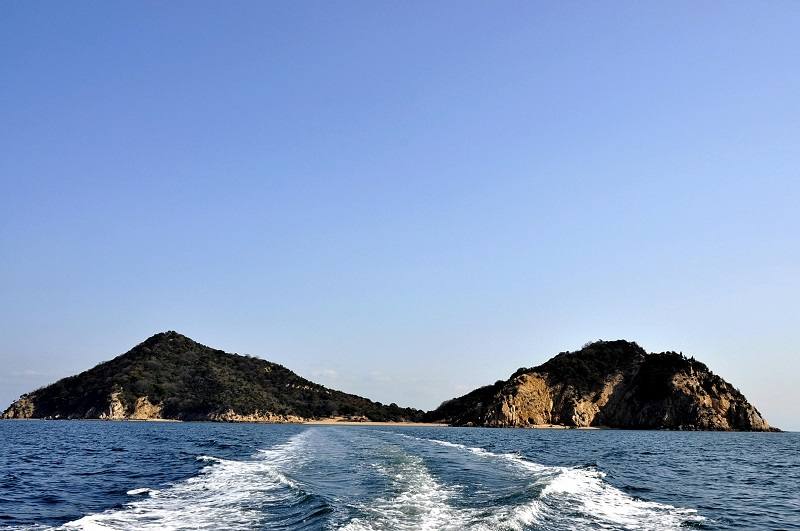
Two peaks are seen on Uji Island.
FUKUYAMA, Hiroshima — An uninhabited island in the Seto Inland Sea off the coast of Hiroshima Prefecture, has a small population of deer.
Unfortunately, the island is so littered with garbage that the local government and citizens have their hands full with cleaning efforts.
Uji Island, located 9 kilometers southeast of tourist attraction Tomonoura, is a small island with a circumference of about 4 kilometers that now falls under the ownership of the Fukuyama municipal government.
I was allowed to accompany the Fukuyama Convention and Visitors Association, which has been tasked with island beautification projects by the municipality, as they headed to the island via chartered boat.
As soon as we reached the shore, deer began to gather, seemingly out of nowhere. Although occasionally wary of us, they began to eat the grass offered to them.
“This is the method we use to perform head counts of the deer here,” said an association official.
This led me to wonder: Why are there deer living here and at what point did the island become uninhabited?
Pottery and other artifacts, dating as far back as the Jomon period, have been found at archaeological sites on the island’s north side. Some artifacts from approximately 1200 to 1600 have also been found.
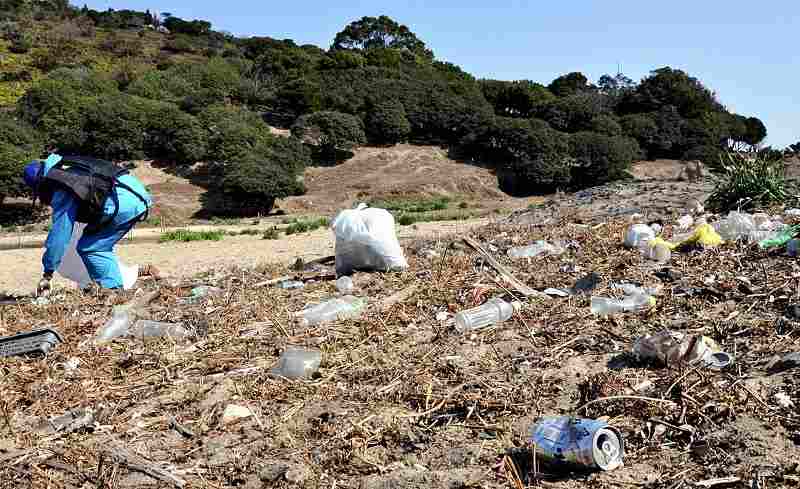
A person helps clear empty beer cans and plastic bottles littering the island.
According to the municipality, the island was owned by a local family during the Edo period (1603-1867), however, records from the Taisho era (1912-26) show it to have been uninhabited. Following World War II, entrepreneurs in Fukuyama cultivated the island to alleviate the food shortage, with about 40 people living there at one time. There was even a branch school, a reportedly small school with only about 10 elementary and junior high school students in attendance.
After the branch school shut its doors in January 1962, the island is believed to have become uninhabited once again.
In 1930, prior to the war, a portion of the island was purchased from the central government by the municipality of what was then Hashirijima Village, and in 1961 and 1963, the Fukuyama municipal government purchased other portions from individuals and companies. While the reason behind the purchase remains unknown, documents from that time describe the land as being for a park. Currently, there are no plans to convert the area into a park.
As for the deer, they were originally kept in Fukuyama Castle Park. The municipality later released five deer along with 50 peacocks on Uji Island in 1985, claiming that it was an effort to “return them to nature.” A recent survey of the area confirmed 11 to 13 deer and one peacock to be living on the island.
Hitoshi Takahashi, president of the Setonaikai Ujishima Club (Seto Inland Sea Uji Island club), first came to the island around 1983 with his friends on a yacht. Surprised at the amount of garbage that drifted ashore, Takahashi has been collecting garbage every year since 1984, calling on citizens to join him.
“I’ve seen coral on the ocean floor before,” he said, “but that natural beauty is starting to break down.”
Indeed, the island is littered with empty plastic bottles and beer cans. According to an association staff member, tables, chairs and nets, which seem to have been thrown away after being used for barbecues and camping have also been found.
They have also seen instances of deer nibbling on abandoned bags of discarded food.
About 70,000 square meters of forest land in the eastern part of the island was destroyed in a fire in 2019. The fire department, which found wood piled up on the beach, presumed that a bonfire was the cause.
I felt as though I could hear the deer begging, “If you come to the island, please keep it clean and safe.”
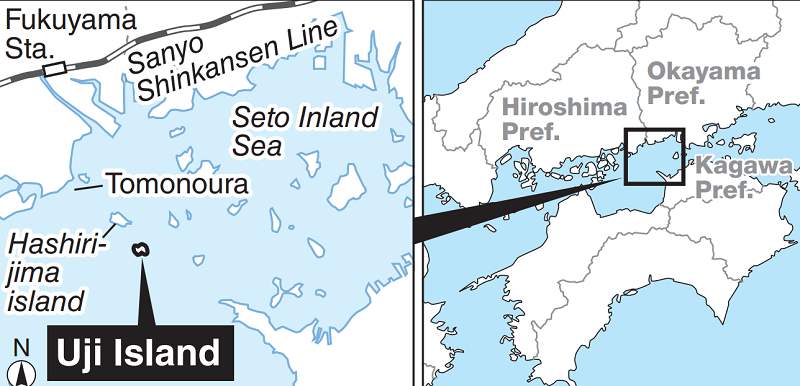
A map of Uji-island
"Science & Nature" POPULAR ARTICLE
-

Mass Oyster Die-Offs Confirmed in Japan’s Seto Inland Sea; High Water Temperature Cited as Primary Cause
-
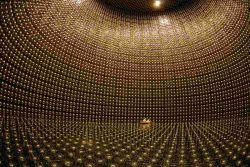
Researchers in U.S., Japan Offer Insight into Ghostly Neutrinos
-

Big Leap in Quest to Get to Bottom of Climate Ice Mystery
-

Security Camera Footage Vulnerable to Outside Access; Investigation Finds 3,000 Pieces Exposed Online
-

Japan Plans to Develop System of AI Evaluating Credibility of Other AI Models
JN ACCESS RANKING
-

Govt Plans to Urge Municipalities to Help Residents Cope with Rising Prices
-

Japan Resumes Scallop Exports to China
-

Japan Prime Minister Takaichi Vows to Have Country Exit Deflation, Closely Monitor Economic Indicators
-

Japan to Charge Foreigners More for Residence Permits, Looking to Align with Western Countries
-

JR East Suica’s Penguin to Retire at End of FY2026; Baton to be Passed to New Character



